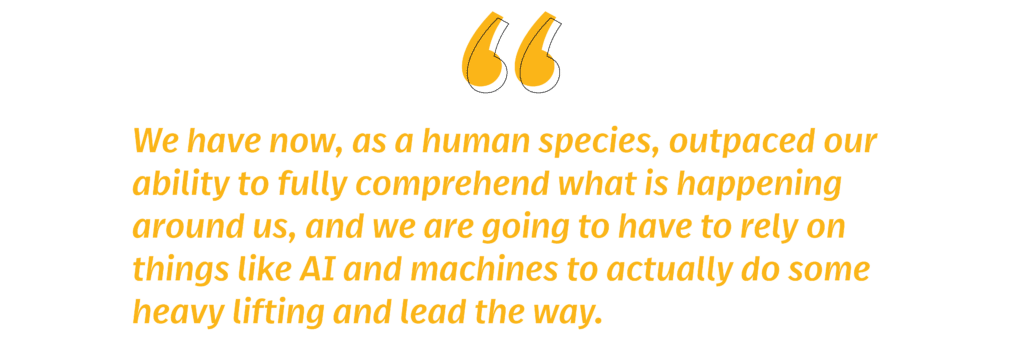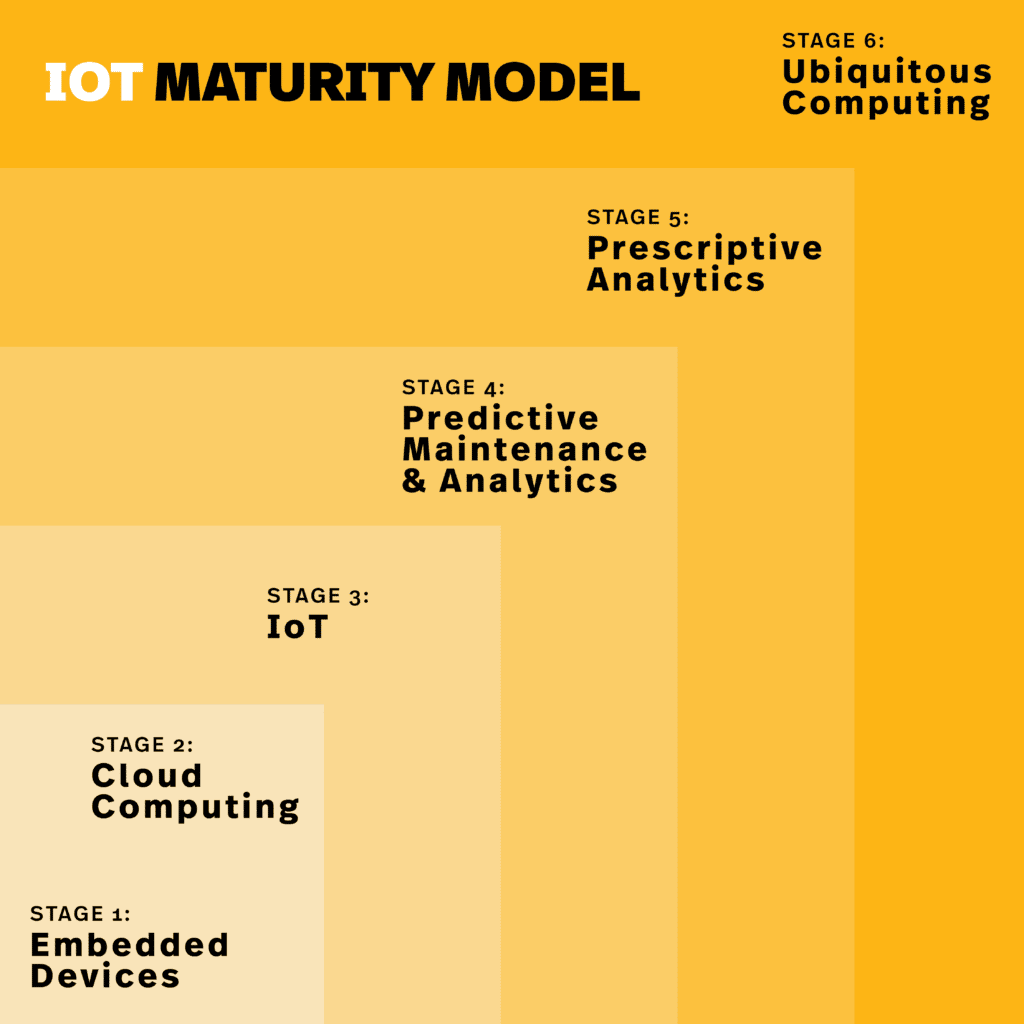BLOG
Pain Points in Adopting Industry 4.0 and How To Resolve Them
In his keynote presentation for Internet of Things Community LiveSlam’21, Founder of Very, Ben Wald, discusses the macro trends that have led to the opportunities he now sees in Industry 4.0. He also shares the most common pain points he’s seen after leading over 250 product launches, and outlines best practices to overcome them. For full details watch the video on our YouTube channel, or read this article for a summary.
What Is Industry 4.0?
World Economic Forum Founder, Klaus Schwab, coined the term “Fourth Industrial Revolution” to express the automation advancements in traditional manufacturing and industrial practices, namely leveraging machine-to-machine communication and IoT around self-monitoring.
To put the advancements of human history into context: from the dawn of time until approximately 1990, we as a species have created a handful of exabytes of data. However, in 2021, it was estimated that we are now generating that same amount of data every single day.

In other words, we’re in the midst of such unprecedented hypergrowth that our brains no longer have the capacity to perceive or analyze our surroundings in the same way. To remain competitive, companies are going to have to rely on machines and AI to do some heavy lifting. Companies that are entrenched in the old way of doing things and refuse to leverage these new tools are going to face some difficult competitive challenges.
The need for greater capacity to analyze isn’t the only reason to jump in now, though. Certain technological shifts have created opportunities that weren’t possible before.

These Three Technological Paradigm Shifts Make Industry 4.0 Possible
1. Confluence of Previously Disparate Disciplines
Industrial technology is accelerating at an exponential rate in part because of a confluence of science and technology disciplines that hadn’t come together before (e.g. machine-to-machine communication, the fusion of robotics, AI, nanotechnology, synthetic biology, etc.).
2. Significant Increase in Granularity of Data Insights
Humans need data to iterate and innovate. When working with the same data sets for an extended period there’s only so far we can push insights and innovations. However, with a significant increase in granularity – something akin to looking at old data under a microscope for the first time – we have new data sets on which to base our analysis. We’re now able to:
- See and analyze high frequency data.
- Sample and stream at rates never available before.
- Analyze through neural networks.
- Implement algorithmic execution at the edge.
Using this new data we can understand and make data-based decisions about complex activities in real time. This increased awareness leads to additional discernment and even new scientific fields.
3. Reliable Foundational Technologies
Substantial advances in these technologies have formed the necessary backbone to support Industrial 4.0:
- Bandwidth
- Digitization
- Interconnectivity
- Data transparency
For example, network bandwidth has grown to the point where Zoom calls can take place in high definition across the globe and IoT devices can communicate with ease across cellular networks.
We’re also starting to see a level of interconnectivity that’s really exciting. This increased interconnectivity is unlocking new innovation as we push past the previous challenges of working with disparate protocols, languages, and data in different formats.
Another key is the increase in data transparency – which enables us to pull data that wasn’t easily accessible before and create new insights.
Without these foundations Industry 4.0, nor Industrial IoT, would be possible. So, where do you start if you’re ready?
The Path to Change
It’s important to remember that not all IoT is equal. There’s a natural progression of capabilities, and while it’s tempting to assume your organization can jump quickly to highly mature IoT deployments, that’s likely not possible if you haven’t already gone through the earlier phases of IoT development.
Using our IoT Maturity Model pictured below as a framework, you can set the stage for continued success and profitability over the long haul.

Stage 1: Embedded Devices
Code runs in isolation on a single machine and does not talk to other machines.
Stage 2: Cloud Computing
Computing services like servers, storage, database networking, software, analytics, and intelligence made available over the internet.
Stage 3: IoT
Bringing embedded devices and cloud computing together. Code connects machines over a network and facilitates communication.
Stage 4: Predictive Maintenance & Analytics
Using machine learning to gather predictive business insights from the data the IoT devices collect.
Stage 5: Prescriptive Analytics
Using advanced machine learning to gather prescriptive insights from IoT device data, such as recommending additional products/services to customers based on behavior.
Stage 6: Ubiquitous Computing
Computation capabilities are available throughout the physical environment, inside and outside of business, while remaining largely invisible to the user.
These stages point the way to maturity and revenue, but along the way there are pitfalls to avoid while advancing through the stages.
Avoid These Pitfalls on the Path to IoT Maturity
Avoid decision paralysis. We frequently see companies with great IoT opportunities struggling to get a project off the ground because they can’t build consensus or come up with a compelling ROI model – often because they’re trying to bite off too much at once. Don’t try to boil the ocean. Start small and adjust as you go.
Avoid huge, risky investments. Let the market lead you. Don’t make huge investments to build something without proper market validation. Instead, start small and prove out ROI with a low-hanging fruit project. If that low-hanging fruit doesn’t work out, that’s a great signal to invalidate your initial assumptions and reconsider further investment.


Avoid reinventing the wheel when you don’t have to. There are already proven models that work well. From a workflow perspective those include the Agile and Lean methodologies. And when it comes to AI and you’re considering build vs. buy, keep in mind – just because you can’t find something to buy doesn’t mean the solution has to be entirely custom. There are models that can be plugged in with minimal engineering effort. Minimize risk by consulting with IoT experts in your industry who’re familiar with those proven frameworks and solutions.
Avoid compromising operational security. When you’re working in IoT, it’s critical to maintain a security-first mindset. Keep in mind what new vectors of attack you’re opening up with IoT, and don’t let the pressure of launching a minimum viable product (MVP) distract from building responsibly from the beginning.
Assuming you avoid the pitfalls we’ve outlined here, there are several best practices to also keep in mind as you work toward successful adoption of Industry 4.0.
Adopt These Best Practices
- Use Agile processes and tools to optimize learning and time-to-value.
- Operationalize cross-disciplinary work and maximize collaboration to improve insights and shorten delivery cycles.
- Take advantage of tools that are cloud-based, interconnected and remote-friendly.
- Build psychological safety to establish a culture of trust and understanding will generate better outcomes.
Industry 4.0 Is Here
Industry 4.0 is no longer on the horizon. It’s here now and holds enormous promise for companies that are willing to take risks and get wet. But with IoT deployments failing left and right, it’s crucial to follow the lead of those who are executing successfully.









